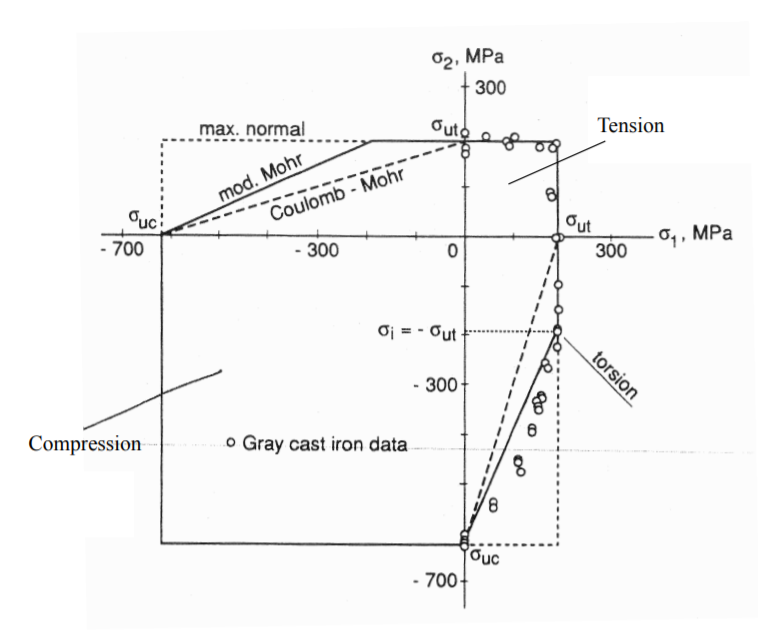11.9: Experimental Validation
- Page ID
- 24886
The validity of the von Mises and Tresca yield criteria and their comparison has been the subject of extensive research over the past century. The easiest way to generate the complex state of stress is to perform tension/compression/torsion tests of thin-walled tubes, sometimes with added internal pressure. The results from the literature are collected in Figure (\(\PageIndex{1}\)) where the experimental points represent a combination of the measured two principal stresses causing yielding. There is a fair amount of spread of the data so that there is no clear winner between the two competing theories. After all, the physics behind both approaches is similar: shear stresses (Tresca) produces shape distortion, and shape distortion (von Mises) can only be achieved through the action of shear stresses (in a rotated coordinate system). The maximum difference between the von Mises and Tresca yield curve occurs at the transverse plane strain and is equal to \((2/r_3 − 1) = 0.15\).

Quasi-brittle materials, such as cast iron behave differently in tension and compression. They can be modeled by the pressure dependent or normal stress dependent (CoulombMohr) failure criterion. The comparison of theory with experimental data is shown in Figure (\(\PageIndex{2}\)).



